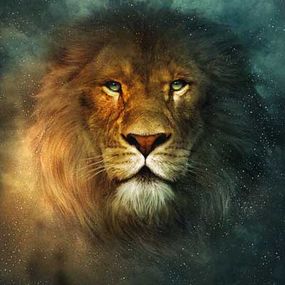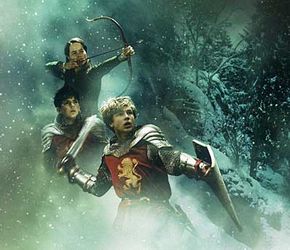The World of Narnia
Narnia is a creation of the great lion Aslan, who sings it into existence as a reflection of his own world in "The Magician's Nephew." Narnia has kings and queens, wicked witches, magic and talking animals that live in furnished houses and behave like people. It's a cool, forested land, and after the death of the White Witch and the end of the Long Winter, its climate becomes mild and temperate.
Although Aslan is certainly the most powerful being within Narnia, he is not exactly its ruler. The kings and queens of Narnia are Sons of Adam and Daughters of Eve -- that is, humans. All humans in Narnia either come directly from our world or are descended from people from our world. Children find their way there with magic rings and through doorways, wardrobes and paintings. Narnians and Aslan himself have also used magic to summon children.
Advertisement
Time works differently in Narnia -- children who visit can return a year later to find that hundreds of Narnian years have passed. Or, a thousand Narnian years can pass while only forty years pass in our world. In "The Lion, the Witch and the Wardrobe," the Pevensie children grow up in Narnia, but they become children again when they return home.
Narnia itself is one nation-state within a continent, and from west to east it stretches from the lamppost in the Lantern Waste to the seaside castle of Cair Paravel. Narnia's neighbors are:
- Archenland to the south. Settled in Narnian year 180 by Prince Col, son of King Frank V of Narnia, Archenland is one of Narnia's allies.
- Telmar to the west, settled first by Calormenes and then by pirates from our world.
- Ettinsmoor and wild lands to the north.
- The Great Eastern Ocean to the east, which extends to the end of the world and the realm of Aslan. Lilies cover the water near the end of the world, which is sweet instead of salty.
- Calormen, south of Archenland and across a vast desert. Settled by outlaws from Archenland in Narnian year 204, Calormen is ruled by a leader called the Tisroc. The Calormenes worship the god Tash, who has the head of a bird of prey.
You can download a map of Narnia from NarniaWeb.com.

Most of Narnia's inhabitants are animals. After creating Narnia, Aslan selected two representatives from many animal species and made them into Talking Beasts. Small animals, like rabbits, got a little larger, and large animals, like elephants, got a little smaller. Aslan charged the Talking Beasts with keeping order in Narnia and watching over the Dumb Beasts. Mice, the only animals to learn to speak after the world's creation, learned to speak after chewing through ropes that bound Aslan in "The Lion, the Witch and the Wardrobe."
In addition to animals, a variety of mythical creatures live in Narnia, including unicorns, giants, dragons, dwarves, dryads, centaurs and fauns. Many of these creatures behave as they do in myths. Others, particularly centaurs and fauns, are far more noble and well-behaved in Narnia.
Next, we'll look at the inspiration behind this world.
